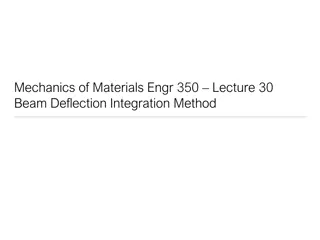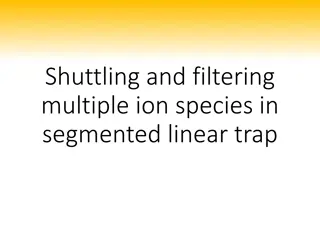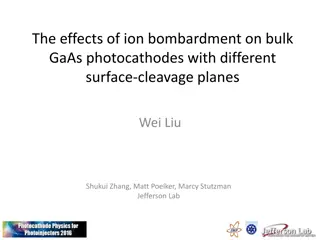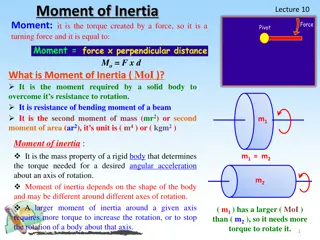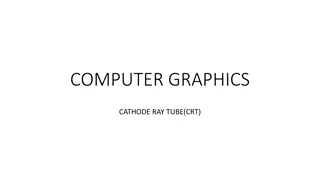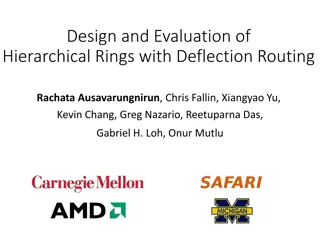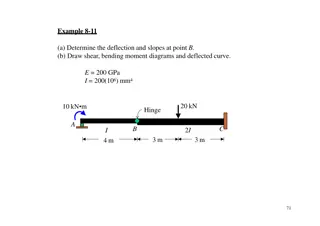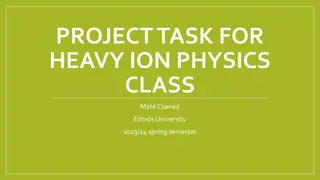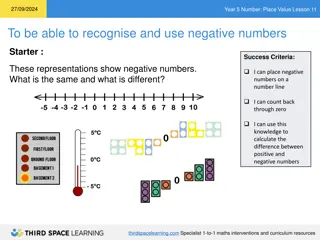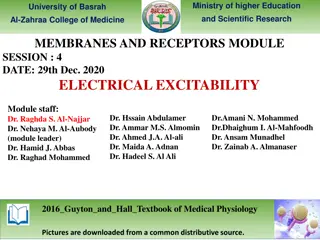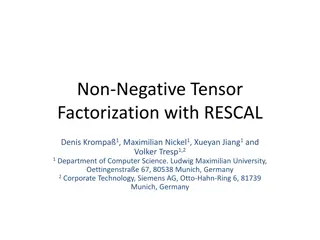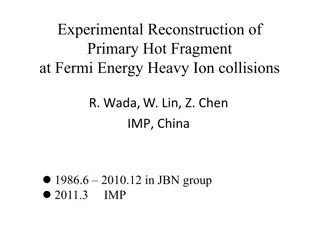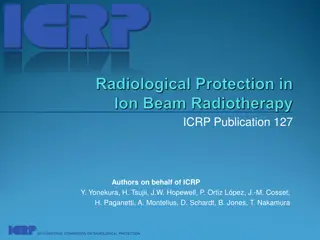Understanding Single Beamlet Deflection in Negative Ion Sources for NBI Applications
Investigating the impact of operational parameters on beamlet deflection in negative ion sources for NBI applications, this study delves into the intricacies of beamlet behavior in fusion-related environments. The analysis focuses on how variations in operational settings influence beamlet trajectory and divergence, with implications for optimizing beam quality and efficiency in next-generation NBI technologies.
Download Presentation

Please find below an Image/Link to download the presentation.
The content on the website is provided AS IS for your information and personal use only. It may not be sold, licensed, or shared on other websites without obtaining consent from the author. Download presentation by click this link. If you encounter any issues during the download, it is possible that the publisher has removed the file from their server.
E N D
Presentation Transcript
Impact of Operational Parameters on Single Beamlet Deflection in a Negative Ion Source for NBI Applications Andrew Hurlbatt, Federica Bonomo, Guillermo Orozco, Riccardo Nocentini, Christian Wimmer 20.07.2024 1
Negative Ion Sources for Fusion Low temperature/pressure H/D plasma with Cs on surfaces for H /D production Extraction and acceleration grid system Plasma Grid (PG), Extraction Grid (EG), Grounded Grid (GG) common to all sources Many apertures many beamlets combine into one beam Permanent magnets embedded in EG to deflect co-extracted e Alternate in polarity row-by-row Cause of residual zig-zag deflection in beamlets, alternating left/right by aperture row Zig-Zag deflection increases divergence of beam compared to beamlet divergence Additional permanent magnets ADCM for zig-zag suppression tested on some machines ADCM foreseen for suppression of zig-zag deflection in ITER HNB 20.07.2024 A. Hurlbatt et al Single Beamlet Deflection NIBS2020 2
BATMAN Upgrade (BUG) Test Facility Designed for investigating effects important for next generation of NBI-relevant negative ion beam production Isolated beamlet BES02-08 BES02-05 Source and beam well diagnosed Plasma Grid with masking BES02-04 BES02-03 Beam Emission Spectroscopy (BES) as main diagnostic CFC tile as optional beam dump Isolated aperture in top half during this campaign 20.07.2024 A. Hurlbatt et al Single Beamlet Deflection NIBS2020 3
Beamlet Deflection in BES Spectra (1/2) Defining Equation Relativistic Doppler Shift: ??= ?0? 1 + ?cos? Three parameters: Unshifted wavelength ?0, particle energy (determines ? and ?), observation angle ? Central wavelength of Doppler peak changes with RF power RF power should not influence particle energy pfill = 0.5 Pa, Uextr = 4.6 kV, Uacc = 31.3 kV, IPG = 780 A, IBias = 4.3 A. 20.07.2024 A. Hurlbatt et al Single Beamlet Deflection NIBS2020 4
Beamlet Deflection in BES Spectra (2/2) Difference between expected Doppler wavelength (??) and measured (??,?) behaves differently for different lines of sight Possible causes of non-zero ?? ??,?: Error in observation angle Error in beam energy (HV measurement) Misalignment of grids Beamlet deflection Only changes in beamlet deflection can explain behaviour of ??,? from BES02-08 20.07.2024 A. Hurlbatt et al Single Beamlet Deflection NIBS2020 5
Calculating Beamlet Deflection Difference ?? ??,? can be used to calculate a relative beamlet offset angle ? ??,? ?? ?0?? ? ? = acos + cos? ? Grids ? ? can only be used for relative measurements for one line of sight that is observing one row of beamlets 20.07.2024 A. Hurlbatt et al Single Beamlet Deflection NIBS2020 6
Expected Changes to Beamlet Deflection For a given beam particle: ? = arctan? /? ? can be approximated from the Lorentz Equation: ? ? ?d? Changes to grid voltages change velocity of particles change to ? ? Changes to electrostatic lenses will change radial distribution of particles change to ? ? 20.07.2024 A. Hurlbatt et al Single Beamlet Deflection NIBS2020 7
Investigating Beamlet Deflection Angle (1/2) Beamlet angle ? changes as function of Uacc Other parameters constant within each scan Behaviour is different for the two scans pfill, Uextr, IPG, IBias all change One or more of these also impacts ? 20.07.2024 A. Hurlbatt et al Single Beamlet Deflection NIBS2020 8
Aside: BES CFC Comparsion Beamlet position on CFC can be measured with sub-mm accuracy Uncertainties in alignment mean measurement is only relative Beamlet particle position and velocity distributions should be strongly correlated Excellent agreement between the two diagnostics 20.07.2024 A. Hurlbatt et al Single Beamlet Deflection NIBS2020 9
Investigating Beamlet Deflection Angle (2/2) Beamlet angle ? changes as function of UHV Changing UHV changes beamlet angle by up to 0.6 (10 mrad) Behaviour is different for the scans pfill, P/P0, IPG, IBias all change One or more of these also impacts ? Changing pfill, IPG, or IBias causes offset in ? Curves 2 and 3 have roughly same P/P0 Changes in incoming particle angles? 20.07.2024 A. Hurlbatt et al Single Beamlet Deflection NIBS2020 10
Conclusions Analysis of BES Doppler peak provide relative measure of beamlet angle changes Measurements agree with CFC tile diagnostic Clear evidence of trends in beamlet angle when grid voltages or PRF are changed Due to changes to beam optics and particle velocities Changes to beamlet angle from parameters that should only impact plasma properties Source pressure, PG bias, filter field strength Possible influence on initial particle angles and meniscus shape Beamlet angle can change even if grid voltages are constant Possible consequences for magnet-based suppression of zig-zag deflection Effective operational parameter range may be reduced Horizontal deflection can fall out of 2 mrad (0.11 ) safety margin Further systematic studies needed to identify behaviours and trends This work has been carried out within the framework of the EUROfusion Consortium and has received funding from the EURATOM research and training programme 2014-2018 and 2019-2020 under grant agreement No. 633053. The views and opinions expressed herein do not necessarily reflect those of the European Commission. 20.07.2024 A. Hurlbatt et al Single Beamlet Deflection NIBS2020 11
Extra Slides 20.07.2024 12
Divergence during PRF scan 20.07.2024 A. Hurlbatt et al Single Beamlet Deflection NIBS2020 13
Derivation of ? ??= ?0? 1 + ?cos ? ??,?= ?0? 1 + ? cos ? + ? By assuming changes in Doppler peak wavelength come only from differences in angle, an expression for this offset angle can be derived by defining ??,? as the measured Doppler shift, differing from Equation 1 by an additional angle ? ??,? ??= ?0? 1 + ?cos ? + ? ?0? 1 + ?cos? ??,? ?? ?0? = 1 + ?cos ? + ? 1 + ? cos? ??,? ?? ?0? = ? cos ? + ? ?cos? This formula can be used to determine the relative shift in a single beamlet using a single line of sight ??,? ?? ?0?? = cos ? + ? cos? ??,? ?? ?0?? ? = acos + cos? ? 20.07.2024 14



